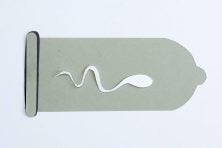How Much Do You Get Paid to Donate Sperm? All Your Questions Answered

We are here to answer questions on a mysterious but lucrative side hustle: sperm donation. How much do you get paid to donate sperm? Who can donate sperm? How does this actually work?
Popular media sends a strong message: Selling your sperm is a simple way to make money when you’re low on cash.
There’s no need to feel weird about sperm donation, despite the many jokes about the process. Sperm banks support thousands of families that struggle with infertility and help make their parenting dreams come true. In a 2019 report published by Fertility and Sterility, more than 440,000 women were estimated to have used donated sperm for insemination between the years of 2015 and 2017 in the United States alone. This points to a large demand for conception via unconventional methods.
However, the process isn’t nearly as simple or fun as the gags might imply. You won’t be able to pop into your local sperm bank, make a contribution and walk out with a check that afternoon.
Here’s everything you need to know about the process and requirements to donate sperm so you can figure out if it’s the right move for you.
Make Quick Cash Without Donating Sperm
You gotta do what you gotta do. But if you’re hesitant to donate sperm for money, or that’s not an option for you, we have some other suggestions for you. Check out some of our favorite ways to make quick money below.
| Offer | What You Can Earn | What You Have to Do | Take Action |
|---|---|---|---|
| InboxDollars | $225/month | Complete short surveys | |
| FreeCash | $1,000/month | Simple online tasks | |
| GoBranded | Up to $140/month | Share your honest opinion | |
| Kashkick | $1,000/month | Try out apps | |
| Solitaire Cash | Up to $83 per win | Compete against other players |
How Much Do You Get Paid to Donate Sperm?
So how much do you get paid to donate sperm? The phrase is a little confusing — sperm donation isn’t a charitable act.
You do, in fact, earn money. (Not nearly as much as its counterpart, egg donation, but it won’t take the same toll on your body, either.)
Like everything else about becoming a sperm donor, the amount of money you make varies depending on the sperm bank or donation center.
So how much do you get paid to donate sperm? Here are some examples of compensation models:
- Donors through the Seattle Sperm Bank earn $100 per approved donation, with the potential to earn $1,500 a month, plus referral bonuses.
- Donors through the Sperm Bank of California earn $150 per approved sample, with most donors earning between $700 and $1,200 per month. The bank also offers $500 for completing an exit appointment six months after your final donation.
- Donors through the international sperm bank chain Cryos earn $35 per ejaculate delivered, plus an additional $30 for each approved ejaculate and another $250 for every batch of 10 approved donations. Donors have the potential to earn up to $720 per month.
Sperm banks also offer free fertility test results, physical exams and blood testing as long as you remain a donor, and some even provide a free annual physical after you stop donating.
Some clinics have more complicated contracts that require you to keep up steady visits and provide regular donations if a recipient chooses you as their donor. That arrangement could affect when you’re paid.
A sperm bank might hold your paychecks in escrow until you’ve completed a contract, so you might not get paid immediately. However, many sperm banks pay monthly or per visit. Like any other side hustle, get all the details on the compensation model before you sign any contracts or make any commitments.
Things to Consider Before Selling Your Sperm
Take some time to understand all the information before you set your sights on sperm donation. You might be surprised by some of these requirements, limitations and choices, including:
- Donor qualifications
- Donor offspring limits
- Anonymous versus open-identity donation
Do You Qualify for Sperm Donation?
Each sperm bank has its own list of physical requirements for donors, but they’re all fairly similar.
Most donation centers require donors to be:
- At least 5’7” and up to 6’6”.
- Between 18 and 40 years old (none accept donations from minors).
- Height and weight proportional.
- In good overall health, based on general physical health screenings and fertility tests.
- College graduates, current college students or military veterans. Some banks pay more if you have a doctorate or attended an Ivy League school (because recipients pay more for those donor qualities).
- A non-smoker and non-drug user.
- Able to provide a biological family medical history.
Even if you meet a clinic’s basic requirements, you’re not guaranteed to be accepted. Sperm banks are for-profit organizations, and like any business, they aim to provide what the market demands.
That means your sperm might be subject to the same kinds of biases you encounter among people face-to-face. In addition to the explicit requirements listed above, you could be denied because of supply and demand at a clinic based on things like your skin color, hair color and eye color.
Based on U.S. Food and Drug Administration regulations, potential donors are denied if they’ve had sex with “another man” within five years.
You could also be denied for genetic health issues, such as blood clotting disorders.
The FDA hasn’t added a vaccine requirement for sperm donation, and it doesn’t require COVID-19 screening, either, because it doesn’t classify COVID as a relevant disease in reproductive tissue donation. That’s because respiratory viruses aren’t transmittable through reproductive tissues like sperm. As private facilities, some sperm donation centers might have their own requirements in place, however. Check ahead of time.
Some sperm banks will tell you why your application is denied, but some might not. Make sure you have a strong understanding of the requirements before you begin the application process.
Donor Offspring Limits
Donation centers are regularly updating policies and practices to address ethical questions that come up about sperm donation and assisted reproduction.
News stories in recent years have uncovered serial sperm donors with multiple offspring. Check the details, though — in many of these cases, the donor worked with the recipients privately (aka a “known donor”), not through a donation center.
Most donation centers set a limit on the number of births or recipients per donor.
The FDA, which regulates sperm donation (and other organ and tissue donation), doesn’t set a legal offspring limit. Instead, the American Society for Reproductive Medicine sets guidelines for the industry and recommends a limit of 25 births in a population of 800,000 (roughly the size of Seattle).
Many donation centers set limits well below the ASRM guideline — around 25 families in the U.S. per donor is a common maximum.
Anonymous vs. Open-Identity Donation
The FDA requires clinics to keep some donor information for medical purposes, but it doesn’t regulate anonymity. You’ll make that choice based on the clinic you choose.
Ask the donation center about its policies. Get crystal clear information about your options and long-term obligations before you consider donating sperm. Donor arrangements include:
- Anonymous: Neither the donor nor the recipient gets identifying information about each other. You likely won’t even know whether a recipient conceived using your sperm.
- Semi-open: You and the recipient get some information about each other but not identifying details or contact information. The clinic is usually a go-between to pass correspondence between you and the recipient. You might learn whether the recipient had a baby using your sperm and even get baby photos. Or you might just stay open to possible contact in the future from the child once they’re an adult.
- Open: You and the recipient have each other’s contact information and communicate directly. Ideally, you and the recipient determine together how much ongoing communication you’ll have and whether or not you’ll have contact with the child. But the child could always decide to contact you on their own sometime in the future.
Here’s the catch: Technology, as it often does without trying, has thrown a bit of a wrench in this situation.
Increasingly accessible family tree DNA testing has made some curious (or unsuspecting!) donor-conceived children privy to their genetic roots — even when donors and recipients agreed to anonymity.
Many countries, including the U.K., have removed the option for anonymity in recent years by legislating a donor-born child’s right to find their biological father (i.e. the source of their donor sperm) after they turn 18.
How Hard Is It to Become a Sperm Donor?
Every donation center dictates its process for sperm donors, but they’re fairly similar since many parts of the process are regulated by the FDA. After you choose a sperm bank, you should expect a pre-screening process, physical exam and evaluation of your family medical history before you provide your first sample. In many cases, you’ll also sign a contract with terms about the frequency of donations and your general health during the donation period.
The Sperm Donation Process
These are the steps that will be crucial in determining for yourself if you’d be suitable for the sperm donation process:
1. Find a Sperm Bank
Track down a sperm bank that’s close to you through the National Directory of Sperm Cryobanks.
Most centers require donors to live within 25 miles (or about an hour from the clinic) because if you become a donor, you’ll be visiting the facility regularly.
A legitimate organization will be registered with the FDA. Enter the clinic’s name in the FDA directory to ensure it’s registered.
2. Get Pre-Screened
All applicants start by going through a pre-screening over the phone or through an online application. Here’s an example sperm donor application for Cryos.
The pre-screening confirms:
Your eligibility to work (and be paid) in the U.S.
Some medical history, including potential sexually transmitted infections, mental illness, allergies and drug use.
Your height, hair color, eye color and ethnicity.
3. Provide Detailed Family History and Get a Physical Exam
If you pass the initial screening, you’ll be invited in for a thorough interview that takes a deep dive into your family tree. Be prepared to provide a detailed medical history for several members of your extended family.
This overview of the process from Phoenix Sperm Bank shows an example of the information you can expect to provide.
You’ll also get a physical exam that includes a blood test, urine test and DNA analysis as well as a screening for STIs, including HIV. You won’t pay anything for this exam, and most clinics provide regular physicals as long as you’re a donor.
4. Provide a Sample
If you pass the first two levels of the screening process, you’ll provide a semen sample for the clinic to test.
Your sample will go through a fertility test for the kinds of things you’ve probably heard joked about on TV: sperm count, motility and the overall health of the sperm.
In other words, what’s the likelihood this sperm can help conceive a baby?
Depending on the company, you might have to wait up to six months to find out whether your sperm passes this test. Semen samples are frozen and tested again after several months to make sure they can hold up in storage waiting for a buyer.
You don’t usually get paid for providing this sample, and the sperm bank won’t save it to sell to a recipient in the future.
5. Sign a Contract to Become a Sperm Donor
Eligible donor? Check. Healthy genetics? Check. Hearty sperm? Check! You are well on your way.
You’ll be invited to become a sperm donor once you pass the full screening process. Next up, you’ll sign a contract with the donation center.
Depending on the clinic, the contract might include things like:
How often you’re expected to donate. Sperm banks prefer frequent donors, so your contract might require you to donate several times per month or even multiple times per week.
A requirement to abstain from sexual intercourse before donation. Presumably, to ensure strong sperm samples, you could be asked not to have sex within a few days of donating sperm.
Payment terms. Your contract should spell out how much you’ll earn,and when and how you’ll be paid, plus any stipulations you have to meet.
6. Donate Regularly
You might be surprised to learn how often you’ll be expected to donate — but the rest of this part of the process is pretty much what all the TV shows and movies have prepared you to expect.
You can’t collect your semen from home and deliver it to the clinic. You have to visit the clinic and deposit your sample on-site, in a private room with access to pornography.
You’ll deposit the sample itself into a sterile container, and the sperm bank will freeze it until a recipient chooses your profile. Then it’s thawed and used for the artificial insemination process.
Are You Ready to Be a Sperm Donor?
Infertility is fairly common in the U.S. Roughly 15% of couples experience infertility, and about half the time the underlying issue is male infertility. Plus, some people who don’t have fertility issues also use sperm donors to get pregnant.
Sperm donation allows aspiring parents to start building their dream family. Across the board, sperm banks say the need for donors is high, so this gig can give a gift while also helping you make some extra cash.
Although the onboarding process is more involved than most side gigs you’ll encounter, the payoff is fair. If you’re accepted, you could earn upward of $1,000 a month for donating sperm about once per week.
Dana Miranda is a Certified Educator in Personal Finance® and founder of Healthy Rich, a platform for inclusive, budget-free financial education. She’s written about work and money for publications including Forbes, The New York Times, CNBC, NextAdvisor and a column for Inc. Magazine. Freelancer JM Soracchi contributed to this post.
















